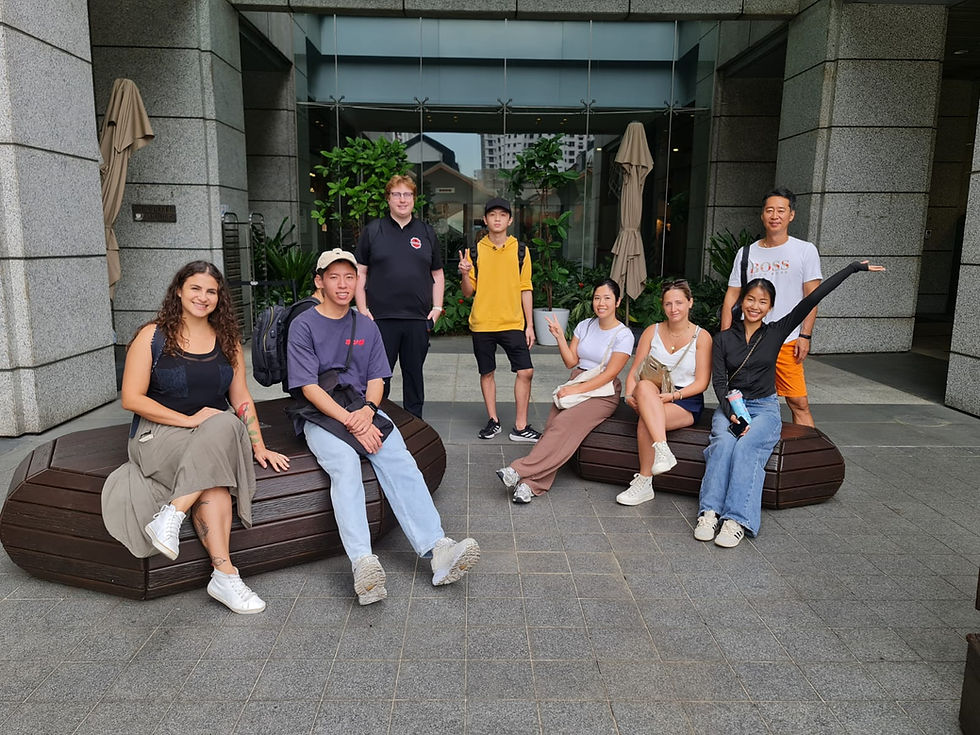TESOL Teacher Teaching Tip # 4: A Right Way and a Wrong Way to Ask Questions in Class
- contact296966
- Jun 26, 2024
- 3 min read

Whether it’s a grammar exercise, or a listening or reading comprehension, the pressure is on for the both of you. You have to get the response from the students, and students have to meet the challenge posed by the teacher’s questions, without risk of embarrassment or appearing unknowledgeable.
There is a right way and a wrong way for a TESOL teacher to ask questions in the classroom. First, let’s look at the wrong way. You are standing in front of the classroom, and students have just finished going through a silent reading for a passage. Students have been working under a time limit, so they read through the passage as quickly as they could, and may only have an inkling of an idea what the passage is about, let alone some of the vocabulary. Now they look at you with unease as you tell them that you’re going to ask some questions related to the reading passage.
Your eyes sweep across the classroom, while all the students attempt to look too busy to be called upon; they are concentrating their gaze on the reading passage, hoping that in doing so, they will mysteriously vanish from the teacher’s vision. To no avail – there’s no escaping the teacher’s awareness of who’s present in the classroom. You open your mouth, and say:
“Akiko; what is the difference between gone to school and been to school?” There is a collective sigh from all the students, except poor Akiko, who now is hunched over her worksheet in trepidation and terror. All her classmates are off the hook for answering the question, and now are looking without envy at her, relieved that they are not experiencing the pressure she is now under to provide an answer.
This is the wrong way to ask questions in the TESOL classroom! In fact, it’s the wrong way to ask a question in any classroom. Why? The moment you speak the student’s name, two critical things happen. One you have put that student on the spot – the deer in the headlights moment – which has created a huge weight of pressure on the student to perform in front of classmates. And if the student learning English is not confident of their English speaking, or of their understanding of the content for which they are being questioned, and possibly without an answer to give, they will feel the classroom has suddenly become an environment where their weaknesses are exposed and open to judgement and ridicule. The second thing that has gone wrong is that the moment you named the student to answer the question, all the other students felt an overwhelming sense of relief – they don’t have to answer the question; this tells them that they can relax, which means they can tune out of the lesson. They might take this opportunity to send a text message, or close their eyes for a moment. The fact is, they are no longer focused on the lesson. So if Akiko cannot answer the question, whichever student you name next, they will be jarred back to reality, and will be left feeling disoriented and lost, all because you allowed them the chance to zone out of the moment.
So what is the correct way to ask questions in the TESOL classroom? It’s a very simple matter of rearranging the steps:
1. Pose the question to the entire class. No one is being singled out with an unnerving task of answering the question. All the students are asked to consider the question. A feeling of ‘We’re in this together’ is the atmosphere of the classroom. You are asking all the students the question.
2. Give the students a few seconds to think of the answer. Everyone is obligated to think about the question, and form an answer in their mind.
3. Randomly choose a student to respond. By this time, all of the students should have thought of an answer, and although that one student is called on to respond, if said student does not have an answer to give, or gives a wrong answer, you can now easily call on any other student, who will have their answer to give.
Don’t forget to acknowledge and praise the student’s response, to help build his/her confidence of speaking English in class!
Written by: Michael Bunyak
English Teacher at Canadian Education College, Singapore



